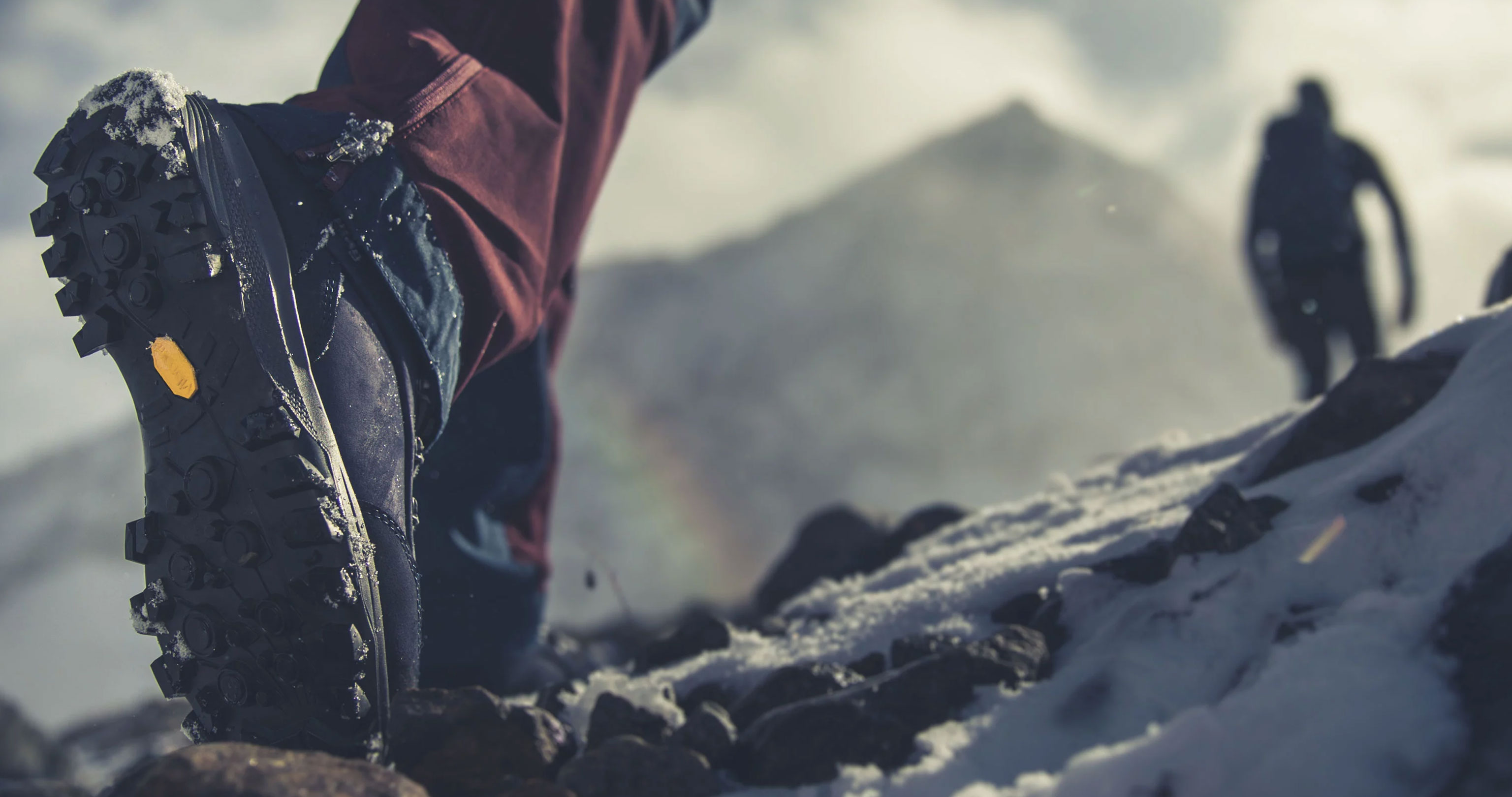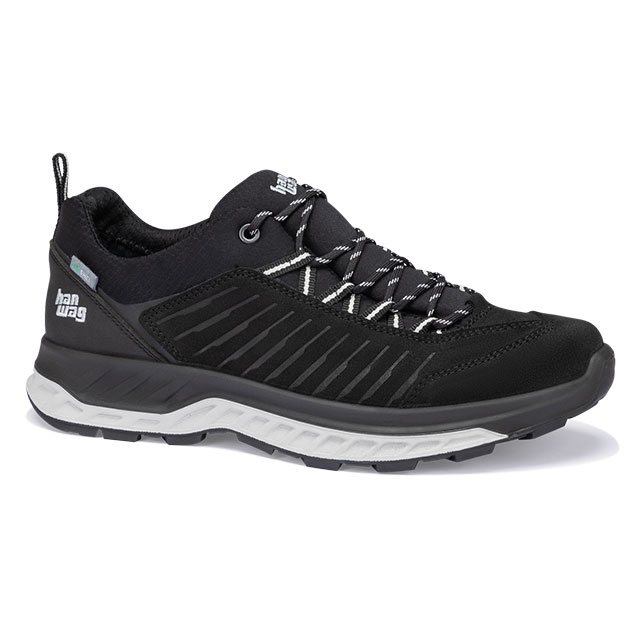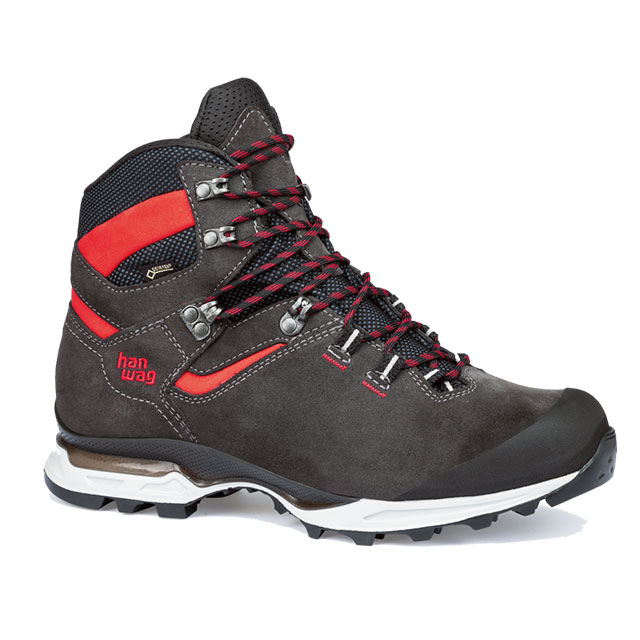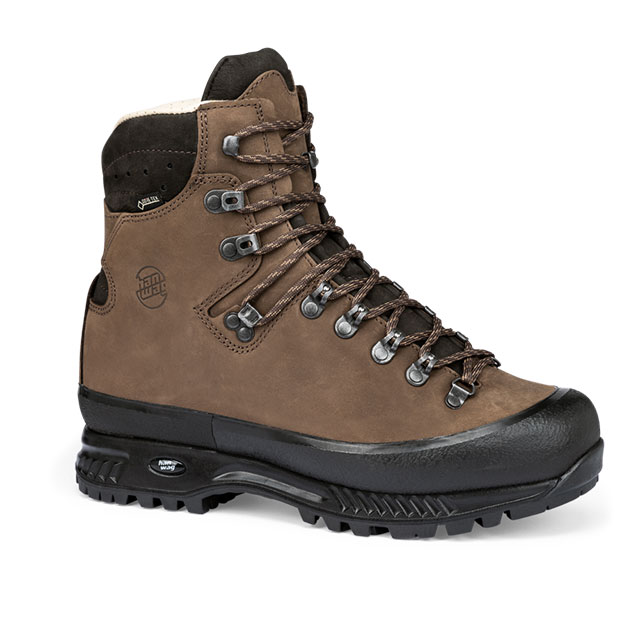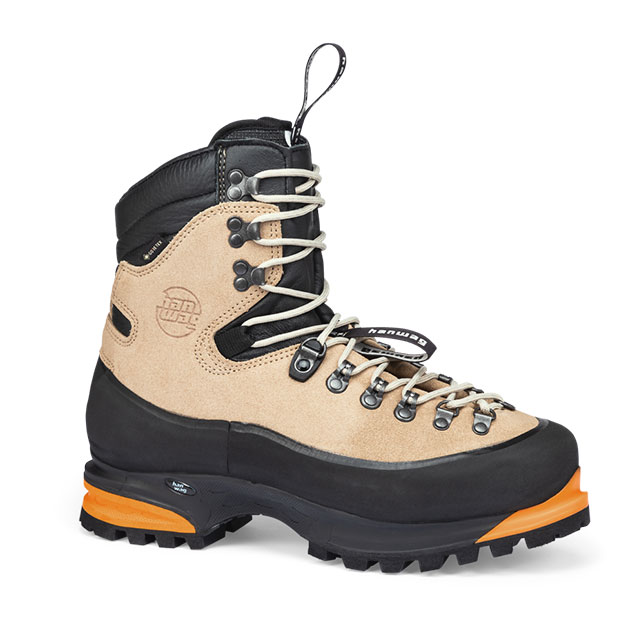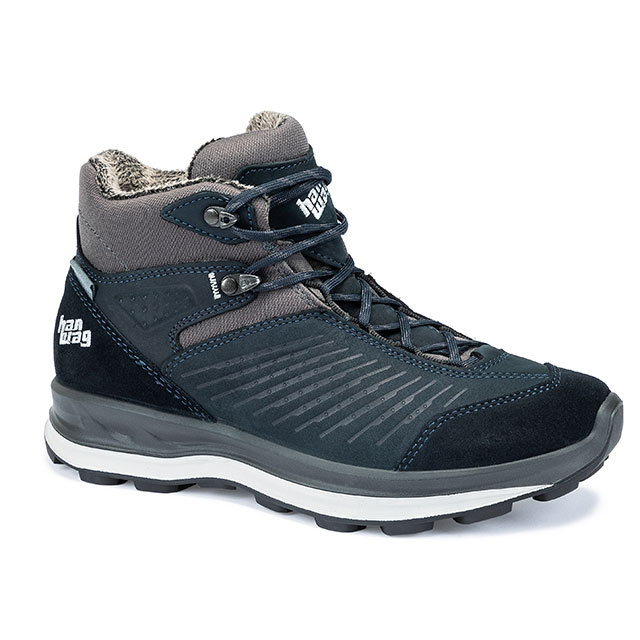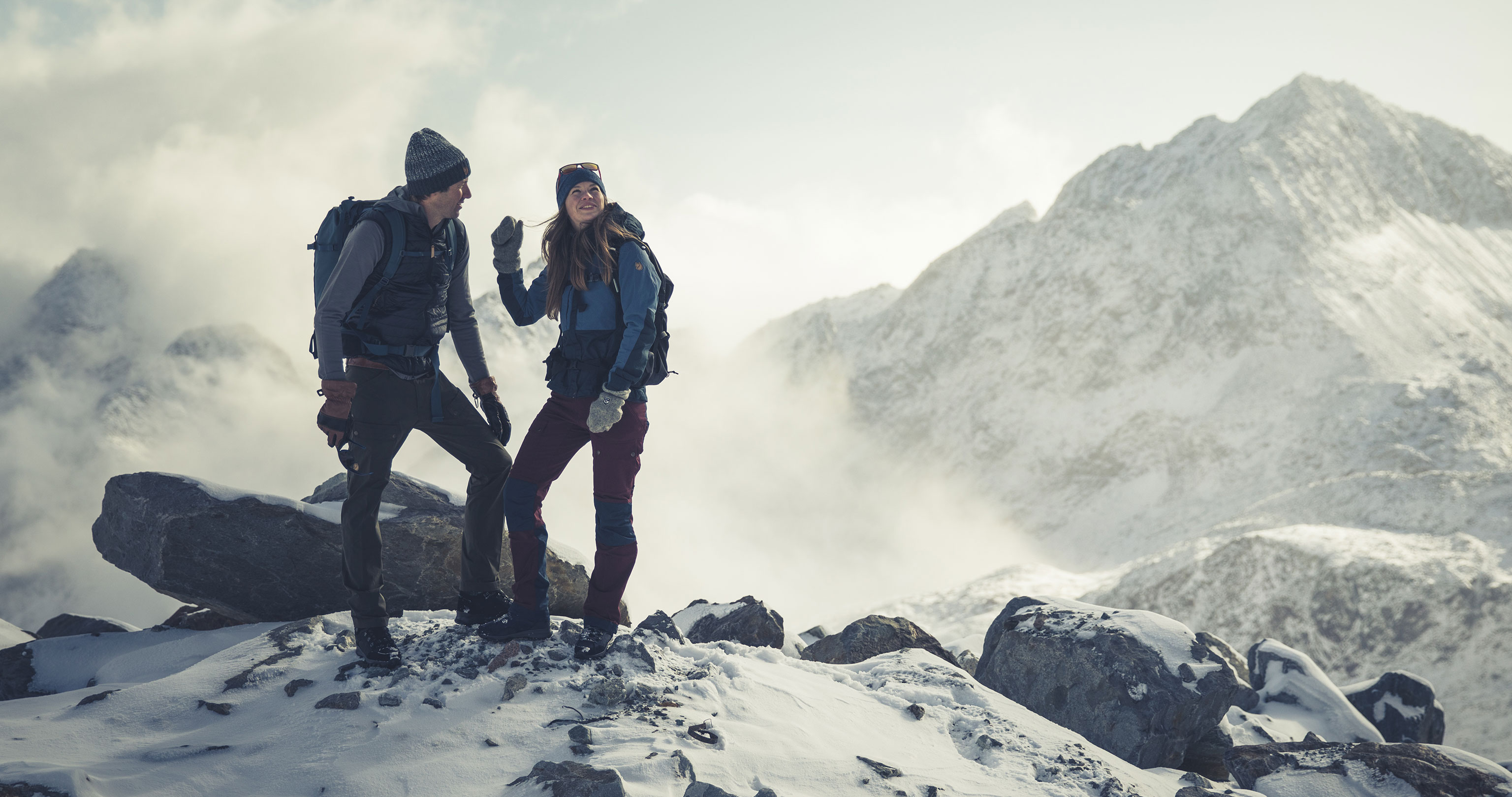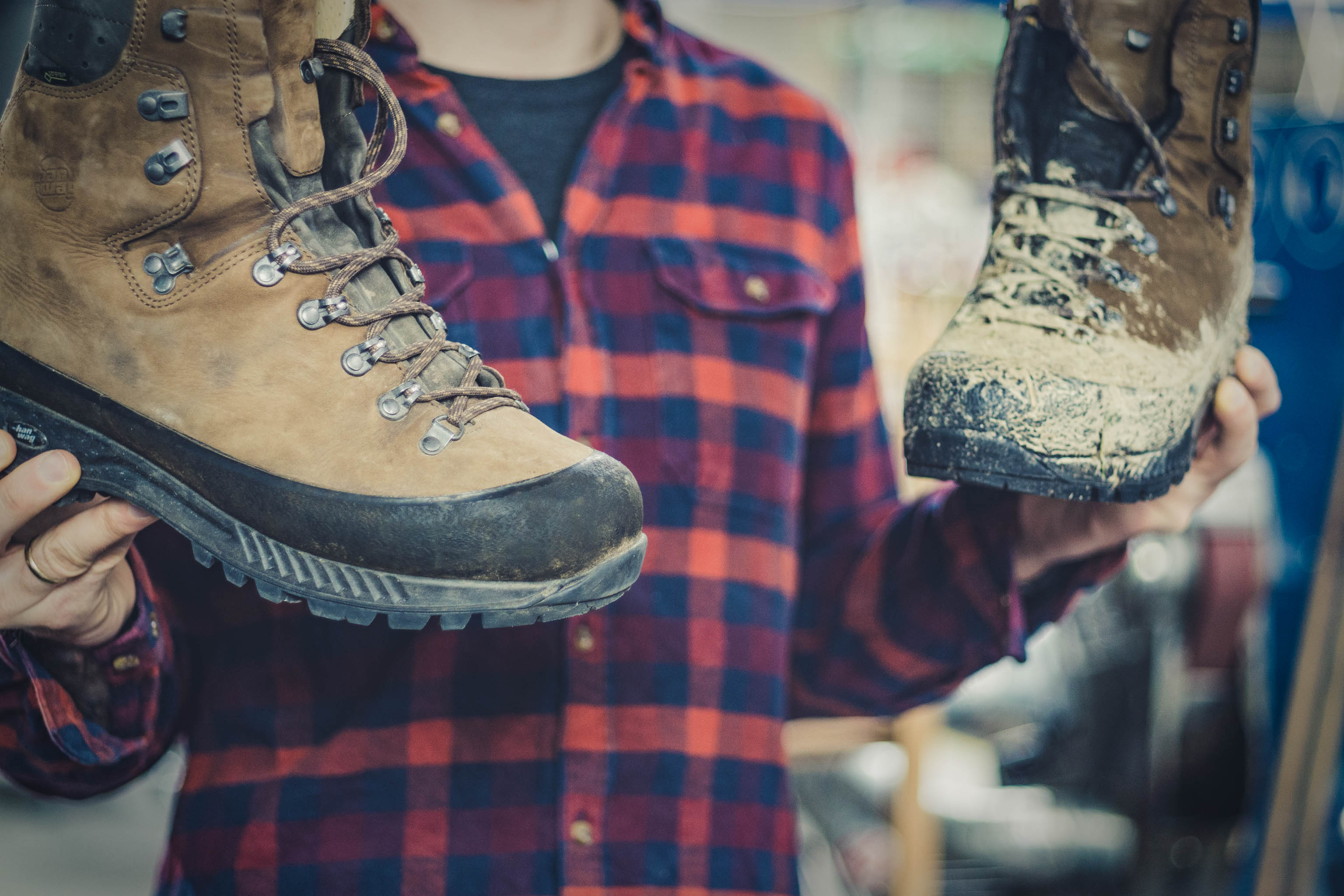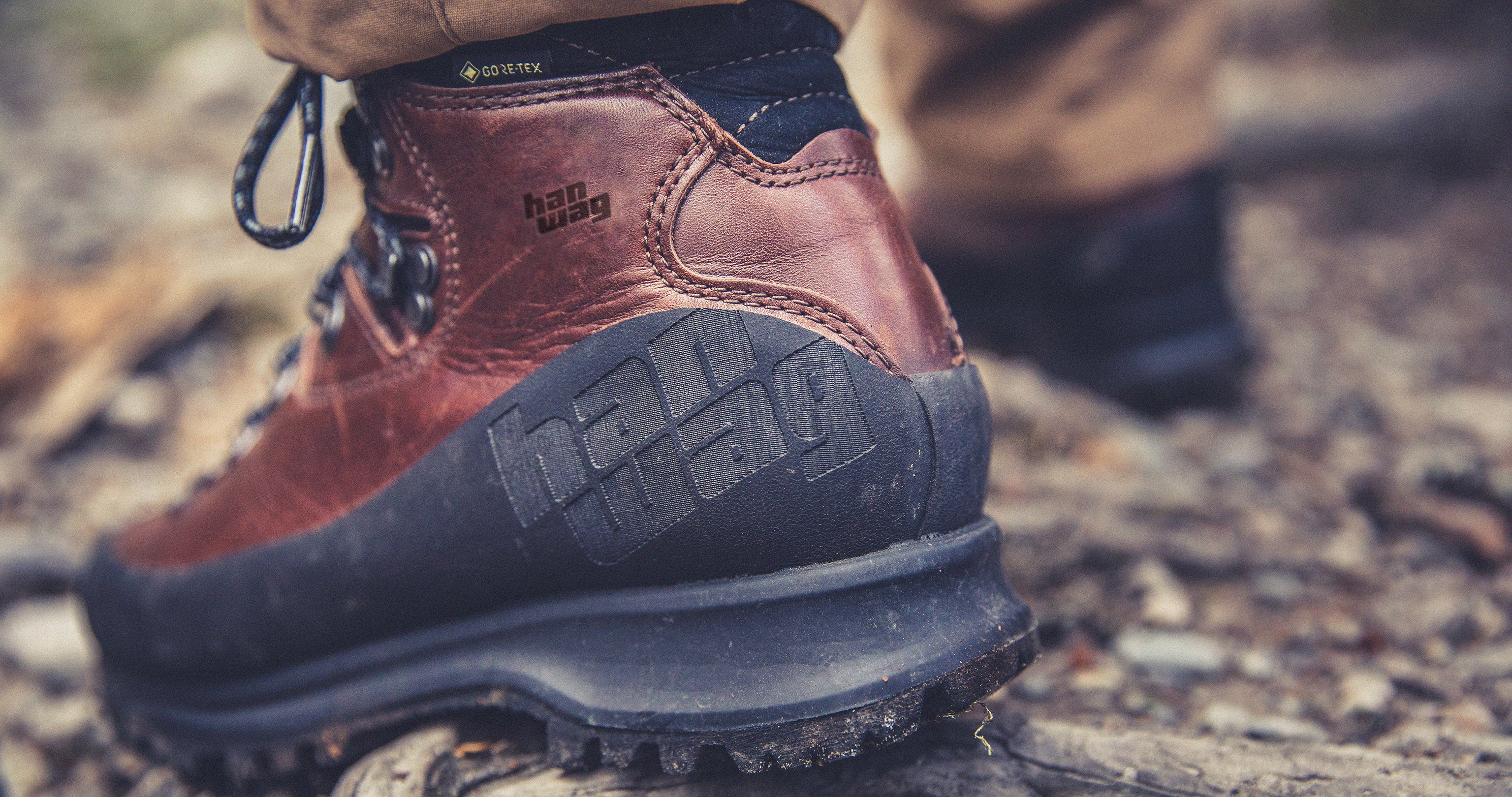Updated on
-
Sneak Peak – The 5 Key Tips
- Hiking boots and mountain boots have different types of soles according to their area of use and activity.
- There are different types of rubber compounds. They determine how grippy or abrasion-resistant a sole is.
- There are also different types of tread patterns. Soft muddy ground requires a different tread to rocky terrain.
- This is why you should also consider which type of sole you need for your intended activity when buying a new pair of hiking boots or shoes.
- The sole unit has a major influence over how footwear performs. For example, the midsole determines how stiff a boot is.
For more in-depth information, read the whole article.
- The best rubber compound for hiking shoe grip
- Hiking shoe grip – it’s all about the tread
- The right sole for each area of use
- Comfortable soles for easier trails
- Versatile soles for demanding hiking
- Robust soles for trekking tours
- High-grip soles for alpine tours
- Soles for non-slip winter footwear
On slippery trails and surfaces, you need soles with good grip and traction. In steep terrain, such as in the mountains, good grip is crucial. This is why outdoor footwear and work shoes have sure-grip soles.
However, there’s much more to it than this. And when it comes to hiking boots or mountain boots, there are major differences in the different types of tread or outsole. These depend on what the footwear’s destined for.
More about this later. Firstly though, let’s have a look at the main criteria: the rubber compound and the tread pattern.
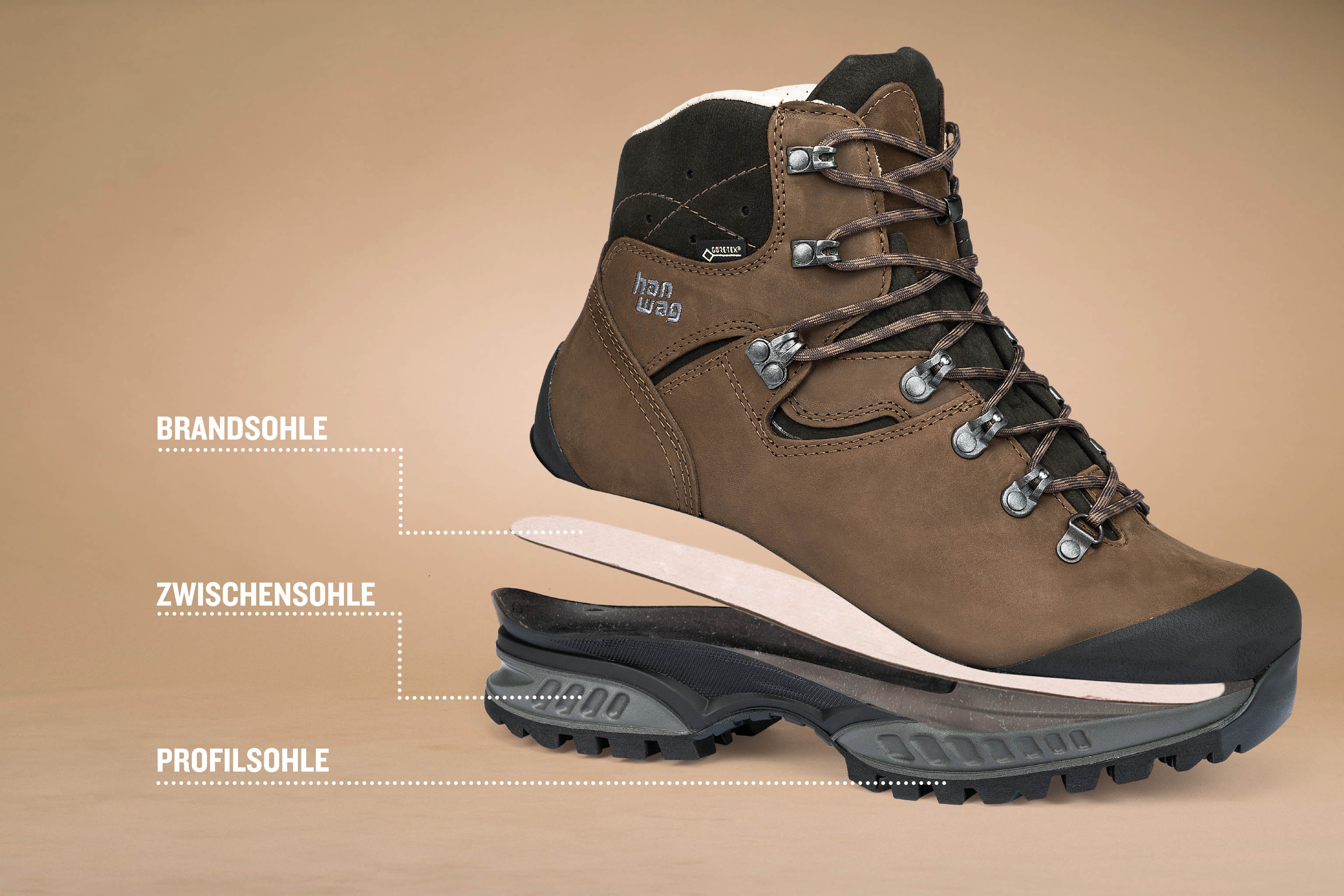
1. The best rubber compound for hiking shoe grip
The outsoles on outdoor shoes are made from rubber, which is produced using natural rubber. This is because of its outstanding characteristics, in particular the good grip it provides on different types of surfaces. By using special additives and manufacturing processes, it’s possible to alter and adapt the characteristics of the rubber. One important criterion for outsoles is that they’re made of harder and softer rubber compounds.
And this is where we come to the rubber dilemma. Outsoles made of softer rubber have better traction, in particular, when it’s wet, but they wear down faster. Outsoles made of harder rubber last longer, but don’t grip as well, especially on wet surfaces.
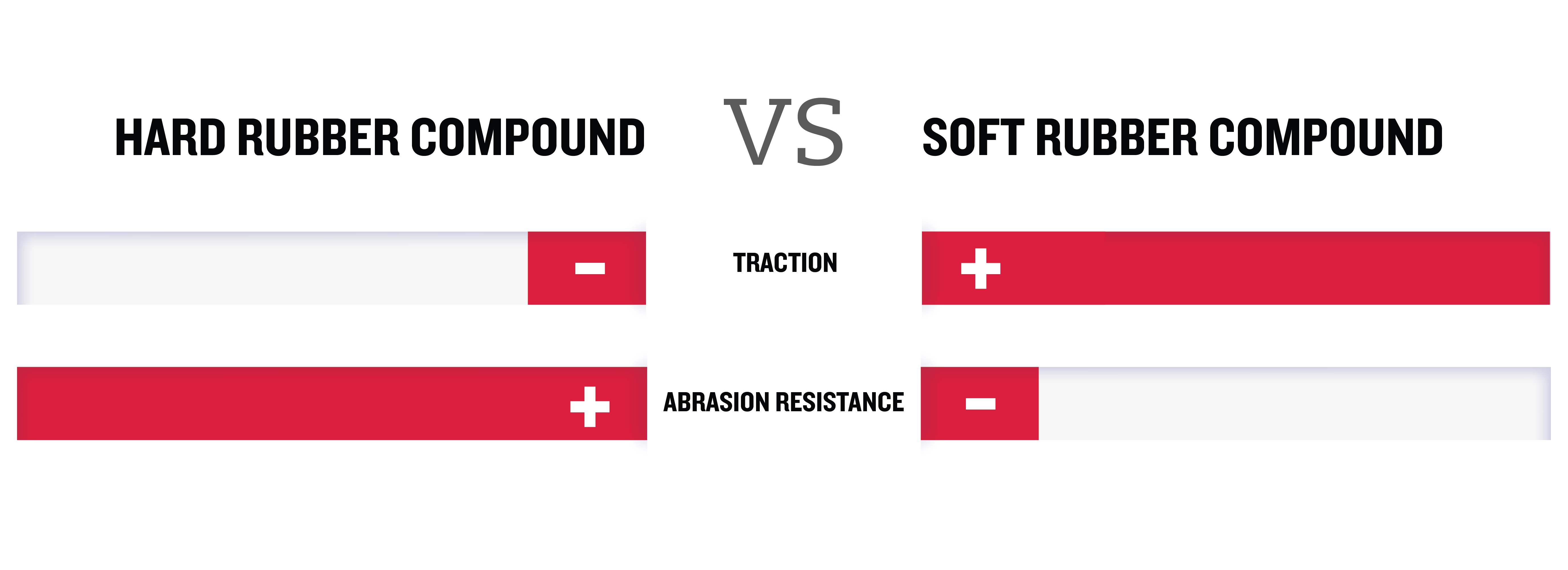
The same issue also applies to car tyres. Winter tyres are made using softer rubber, which means they have more grip on snow and ice. However, they wear down faster on asphalt than summer tyres, which are made from harder rubber.
When it comes to the rubber compound used for outdoor footwear, it’s a matter of finding the best possible compromise for the intended area of use. Climbing shoes are an extreme example of this. As climbing often requires friction, especially on sloping rock or ‘slabs’, climbing shoes are often made of softer, grippier rubber – but wear down comparatively faster.

Expertise and know-how for your outdoor adventures – welcome to the HANWAG BOOTCAMP. Watch the how-to videos on our YouTube channel.
2. Hiking shoe grip – it’s all about the tread
Climbing shoes are also an extreme example when it comes to the tread. Like Formula 1 race tyres for dry conditions, (called slicks), climbing shoes have no tread, the rubber surface is smooth. This gives maximum rock contact, but would soon become slippy on muddy ground or gravel. This is why most natural terrain requires a sole tread with a distinctive tread pattern.
Mountain boot and hiking boot soles use a clever combination of ridges and welts, known as lugs, with deep indentations between them. There are many different types. And for each and every area of use or activity, there is a matching outsole. Market leader Vibram offers more than 1000 different Vibram soles types for outsole shoes alone. And it divides its Vibram sole rubber compounds into eleven different categories. According to Vibram, the actual number of different compound types is much higher. At the end of the day though, they all have the same goal – to make trekking or hiking boots grip.
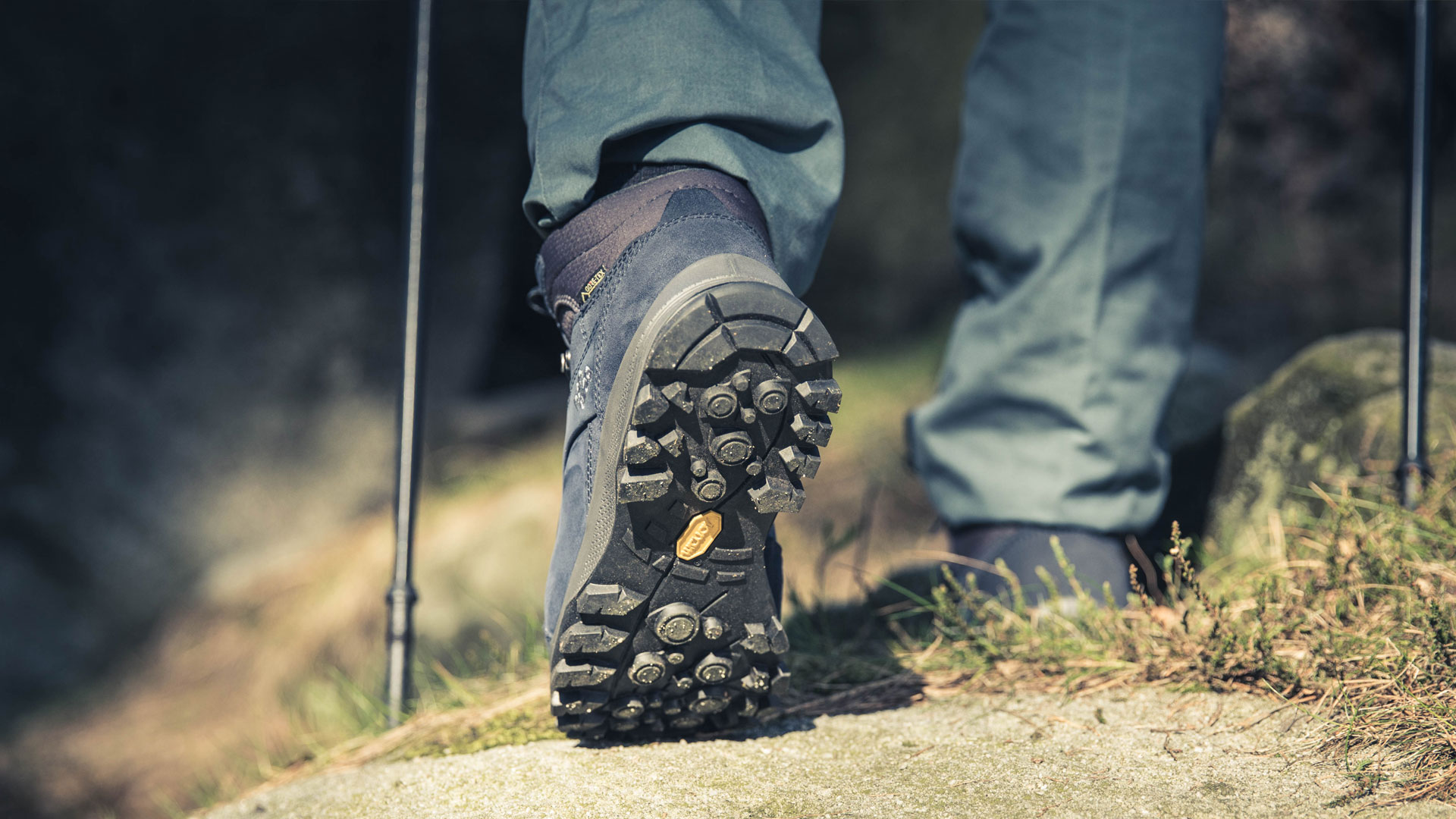
Always stay up to date: Subscribe to the HANWAG newsletter and become part of our community.
3. The right sole for each area of use
As shoemakers, it’s our job to equip each shoe with the right sole. HANWAG alpine mountain boots have sole treads that differ from our lightweight hiking shoes for flatter terrain for instance. To this end, we develop soles together with our suppliers, such as Italian sole manufacturer Vibram. Most of these Vibram soles are exclusive to our collection.
It’s worth sparing a thought for the soles when buying a new pair of shoes. Do they match your intended area of use and the kind of tours, hikes or activities you plan to use your footwear for?
Top tip: Choose a sole that matches your favourite type of tour.
There are three main criteria to bear in mind:
- Ground conditions: Will you be wearing your shoes mainly on hard ground and scree? Or do you plan to use them on softer surfaces, such as mud and grass? Will there be rocky sections? Or do you want a boot for use on snow and ice?
- Steepness: Are you intending to walk through flat, rolling countryside or planning tours in steep, alpine terrain?
- Weather conditions: Do you only walk on sunny days? Or are you out in all weathers? Bear in mind that some surfaces take a while to dry out. For example, dew on grass or fields can remain wet and slippery through the first part of the morning, even if there has been no rain.
To help you answer these questions and choose the right sole, here are five different types of soles. Bear in mind though, this is only a rough guide. When it comes down to it, they often share certain characteristics.
4. Comfortable soles for easier trails
Many hikers and walkers prefer to stick to paved trails or easier paths in flatter regions or lower mountain ranges. This generally means that a more dynamic sole profile is not required. Lower tread depth also means less weight and more comfort. The sole design is flatter to provide a comfortable, efficient roll-off and there is no marked heel.
Example: The HANWAG Blueridge Low ES hiking shoe is equipped with the HANWAG Hike Pro sole that was custom-designed for us. With its 4 mm tread depth, it gives sufficient grip on finer gravel, mud or grass. The large tread blocks with their wide contact area give this sole the best grip for paved trails and damp, slippery paths. In addition, it provides extra walking comfort. The sole has no distinctive heel, which also helps the shoe to roll-off smoothly and evenly.
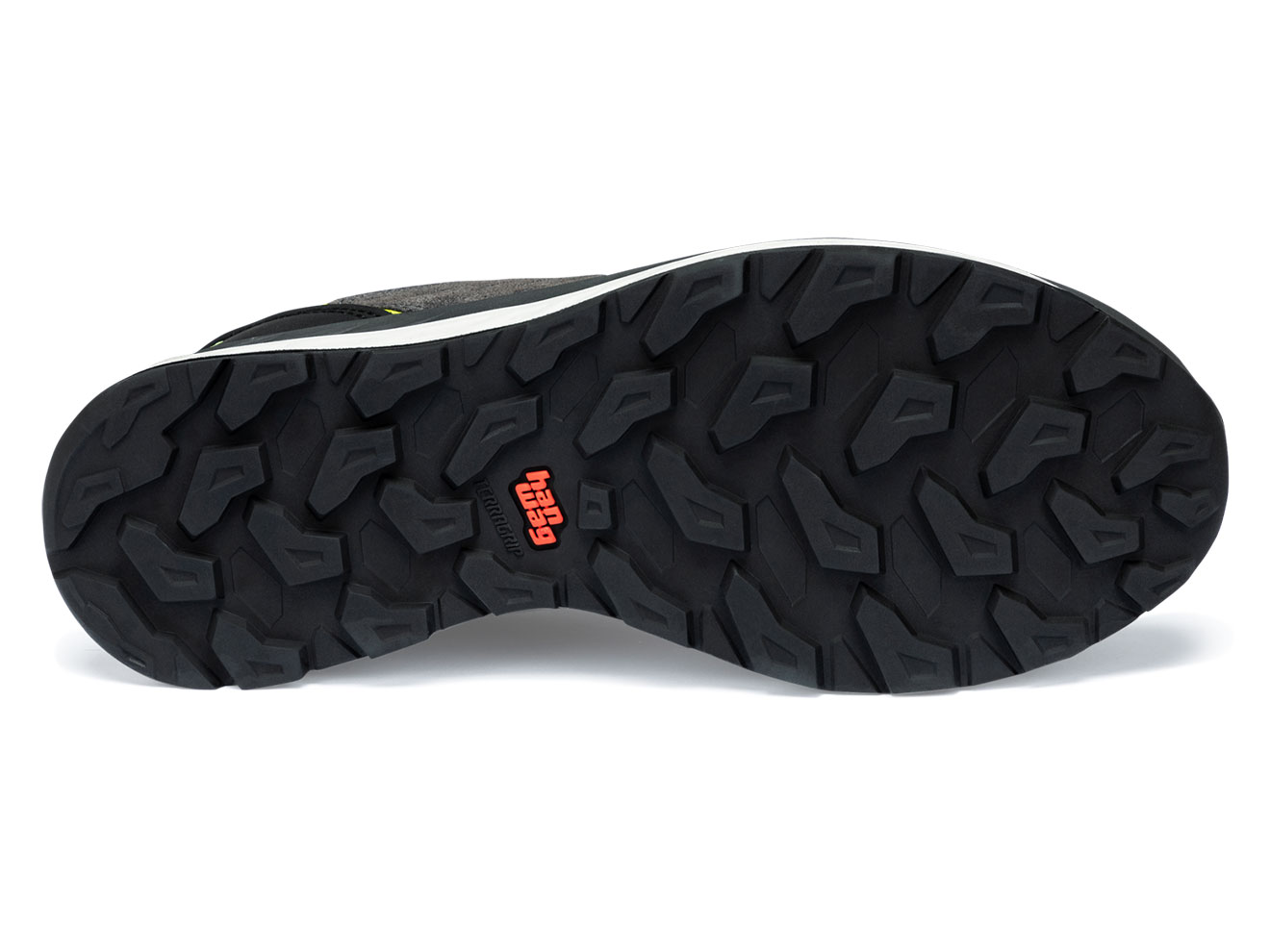
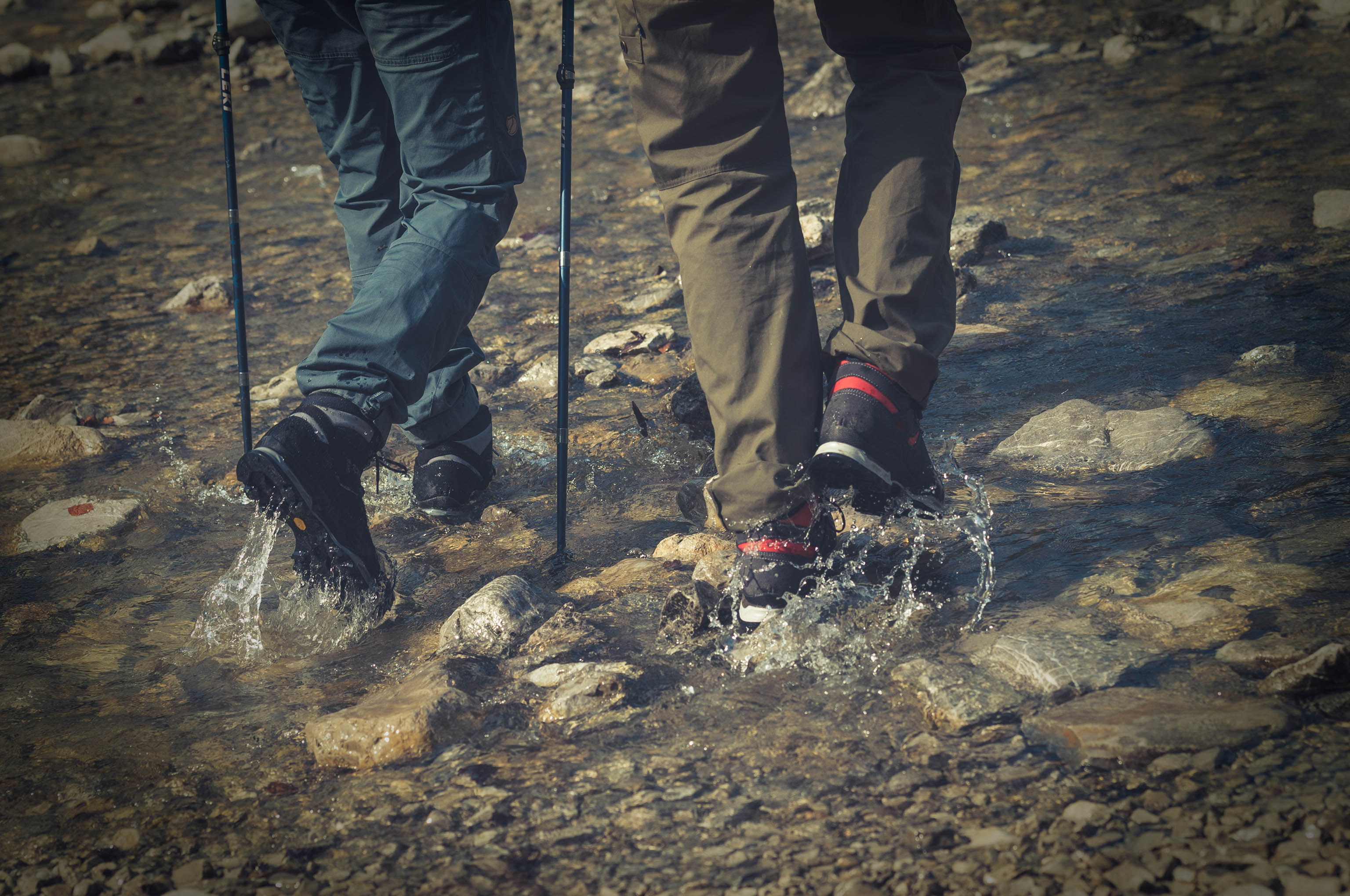
5. Versatile soles for demanding hiking
Higher up in medium mountain ranges and in the foothills of the Alps, the paths and trails get steep and slippy. There are no well looked-after gravel paths here. Instead, you’ll find muddy trails, rough scree and smooth, worn roots. Hiking here requires footwear with a more rugged, non-slip sole. The best grip hiking boots have soles with a prominent heel that gets a firm grasp on the ground to prevent you slipping when walking downhill.
Example: Our Trek Light HANWAG Tatra Light boot comes with an Integral Light Vibram sole. Its tread lugs ensure good grip even on slippy terrain or deep scree. Thanks to the wide channels between the lugs, the sole does not get clogged with mud as quickly. The heel section also has exceptionally large lugs to help you brake on mountain descents. A cushioning shock absorption zone at the rear of this hiking boot sole delivers extra comfort. At the toe there is a flat area for greater precision on rock. This sole is ready for the mountains.
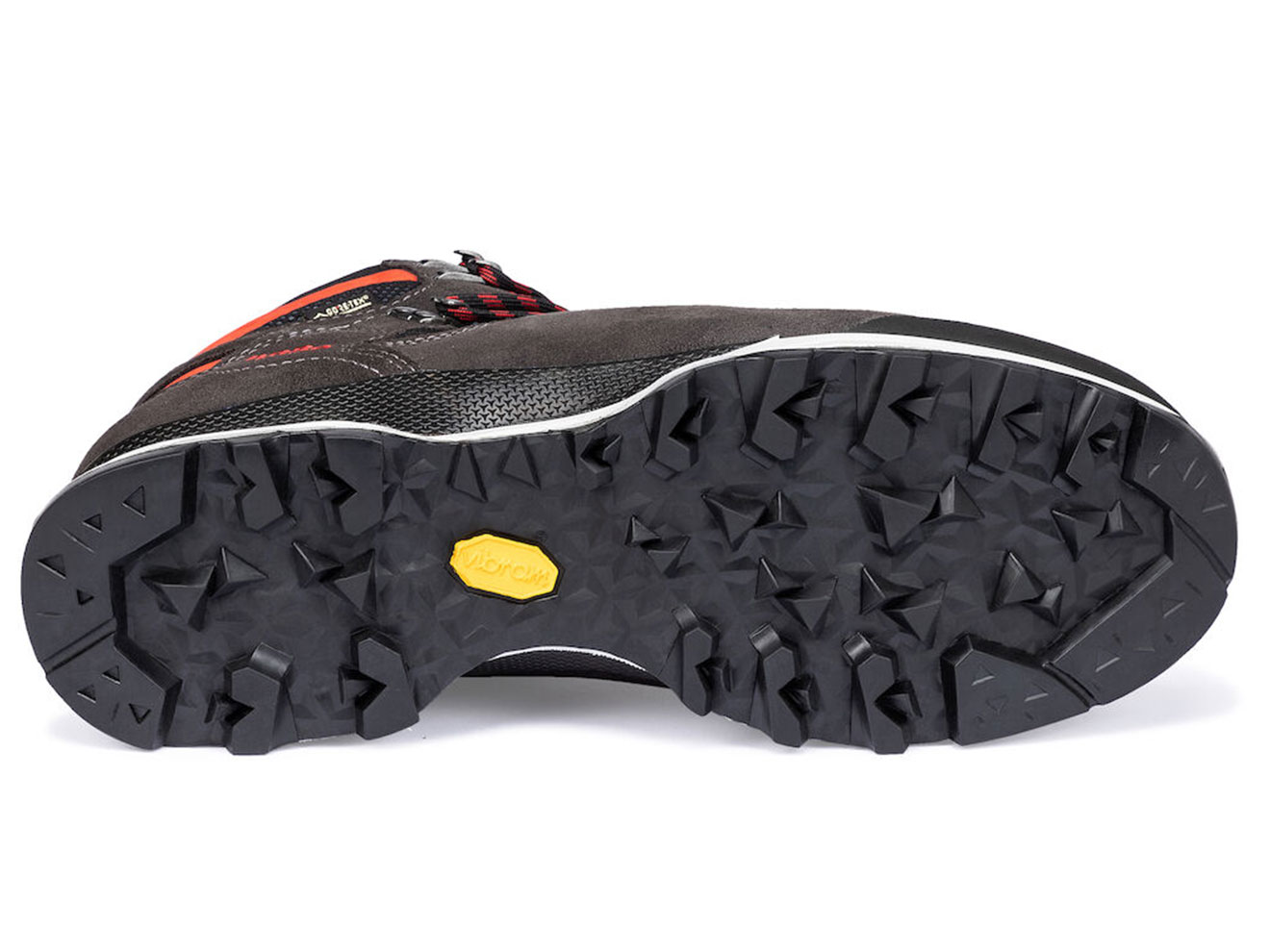
Find out more: Hiking Boot Categories – How to Choose Hiking Boots
6. Robust soles for trekking tours
On a trekking tour, you need to be prepared for anything. You’re likely to encounter everything from soft, boggy ground to hard-packed trails or scree-covered slopes. You might even be travelling cross-country where there are no marked paths. In the rain, rough terrain can become a very slippery business. When you’re carrying a heavy pack, the consequences of a slip could be nasty. This is why trekking boot soles have to meet highest demands and be exceptionally versatile. They also need to offer a smooth roll off, to prevent legs from getting too tired on long treks.
Example: The HANWAG Alaska GTX trekking boot has a Vibram Fuora sole. With its 6 mm tread depth, it offers good grip in soft, deep muddy terrain, such as you might encounter on trekking tours in Scandinavia. The extensive surface area is an advantage to stop you from sinking in too deep. Its abrasion-resistant rubber compound prevents the tread from wearing out so quickly on long tours. And the many lugs ensure good grip on all types of terrain. The marked heel and braking tread blocks in the middle of the sole prevent slipping when you walk downhill.
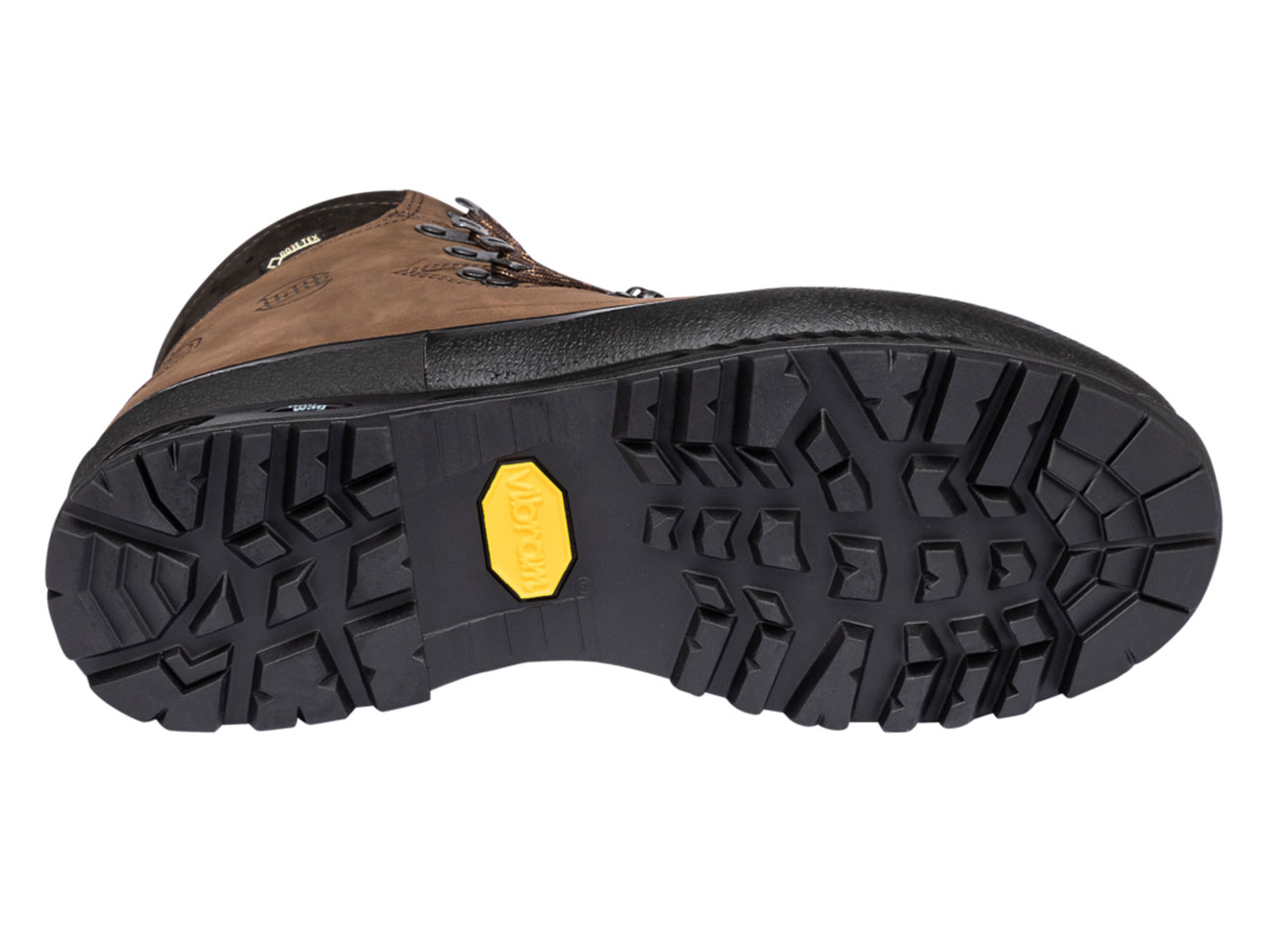
-
How to improve your hiking boots grip: Don’t try this at home!
There are lots of tips online for what to do if hiking boots have slippery soles. For example, you’ll see people advising you to spray your soles with hairspray or to roughen up the sole with a wire brush. “I wouldn’t advise this,” says Andreas Settele, Head of Research and Development at HANWAG. “The hairspray would wear off immediately and you could damage the uppers of your boots. Our rubber compounds have exactly the right characteristics and texture to give optimum grip. If you start roughening your soles up, you’re just shortening their lifespan.” Household remedies and other hacks can do more harm than good.
7. High-grip soles for alpine tours
In high mountains and alpine terrain, you want soles that go that extra mile. Slipping could have serious consequences. The soles on our alpine models offer superior grip and precision on diverse terrains. Their deep, sharp lugs give good traction on loose scree and in névé snow. The marked heel helps you brake when going downhill. As alpine tours (Hochtouren) generally involve rock sections with a certain amount of climbing, these soles have a large, flat climbing friction zone at the toe.
Example: The HANWAG Omega GTX has a Vibram Alpin sole. It has a 7 mm tread depth that meets all the requirements of a high-alpine sole. The overall shape of the sole is long and narrower, particularly if you compare it with a trekking sole. This gives better precision at the front of the foot when climbing on rock and is better for edging when traversing sideways.
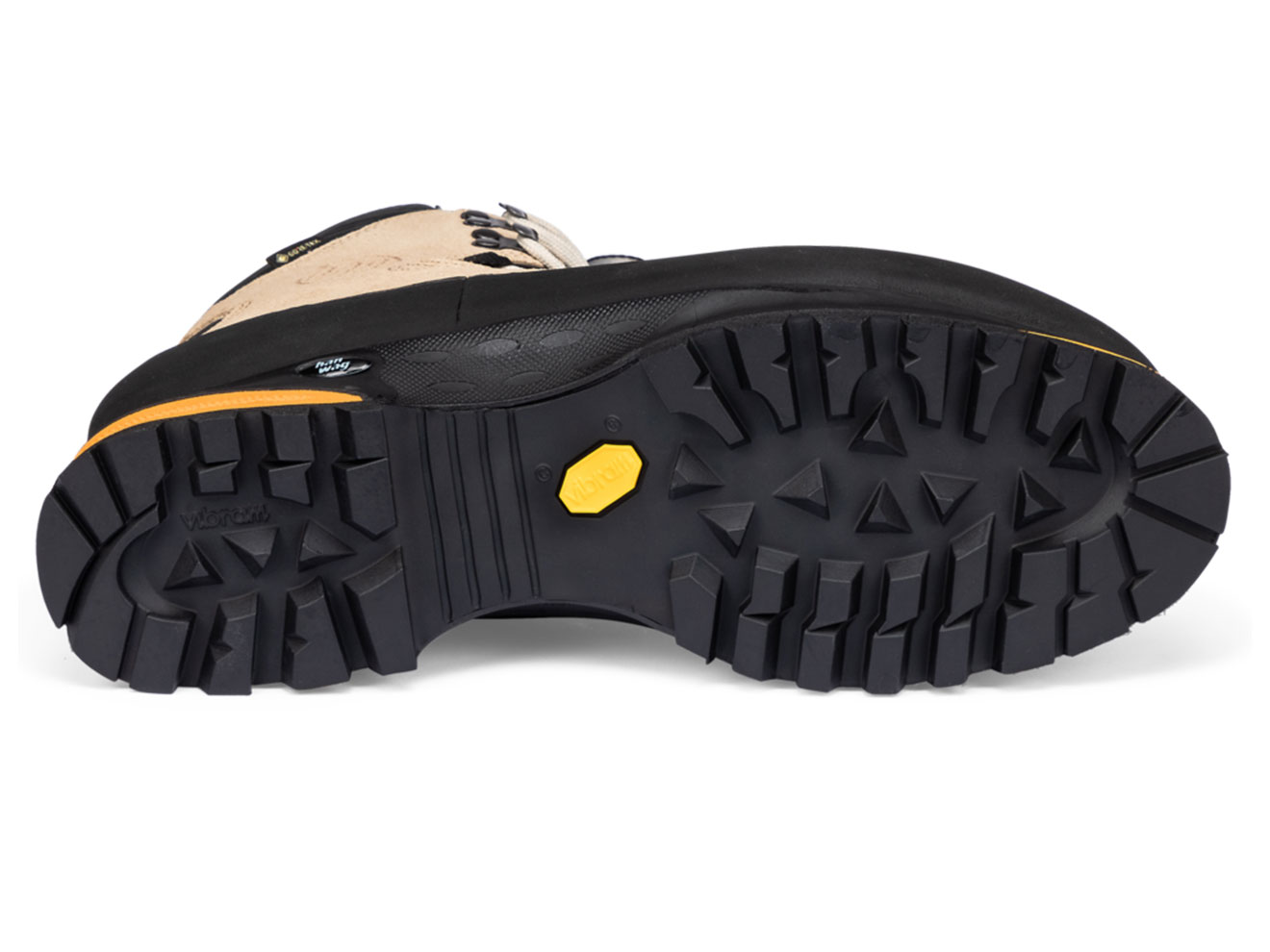
The rubber compound is more on the harder side, so that the sole remains firm on smaller footholds and rocky ledges without slipping. The midsole and insole are also harder, for the same reason. The Vibram rubber compound has proven itself over the years. In addition to high grip and low abrasion, it also offers good friction on smooth rock – and comes pretty near to solving the rubber dilemma mentioned above.
Watch the video: The correct walking technique for hiking and mountaineering (English subtitles available)
8. Soles for non-slip winter footwear
Winter hiking and snowshoe touring need more grip than the rest of the year. Snow and ice are challenging for shoe soles. This is why footwear geared to winter conditions often has a specialist winter sole. They are literally the winter tyres for your outdoor adventures.
Example: The HANWAG Bluestrait ES is the ideal boot for everyday winter use, from walking the dog all the way to moderate winter walks. In addition to its waterproof EcoShell membrane and warm, inner lining, this mid-cut boot has a Fiberbrake outsole that was developed specifically for HANWAG. Its special rubber compound does not harden in the cold. Instead it remains soft and grippy down to -15°C. Cool innovation: The special tread blocks (six on each sole) are made of fibreglass-reinforced rubber. They act like sandpaper and get a firm grip of even icy ground. Furthermore, the dynamic outer tread blocks ensure good grip in snow and slush.
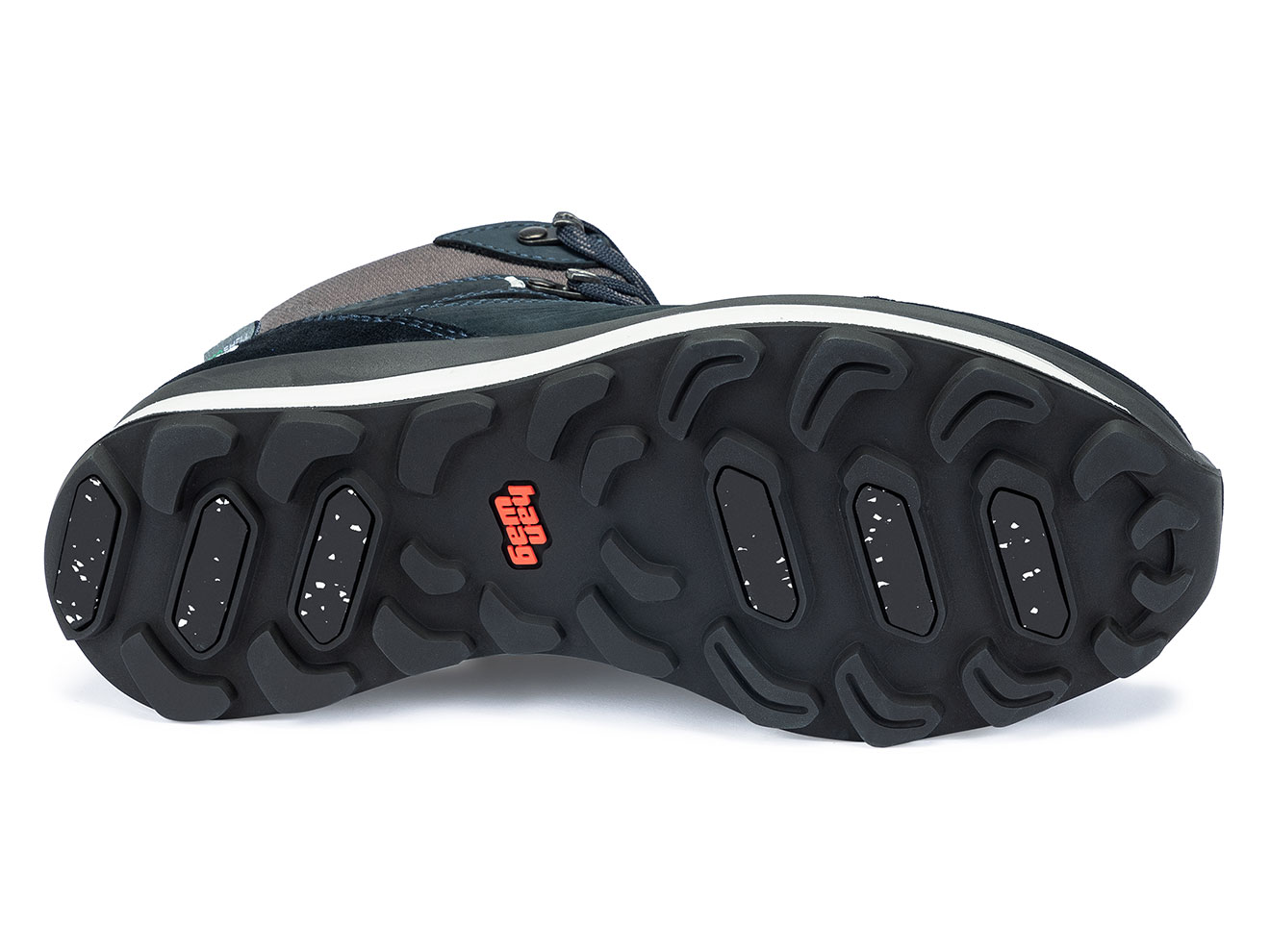
Conclusion
The five different types of soles we describe here are a rough guide. There is a much wider range of soles out there – all with different tread patterns, special rubber compounds and distinct shapes. At HANWAG, we use over 20 different outsoles, each of them are designed to meet a specific purpose and range of activity.

